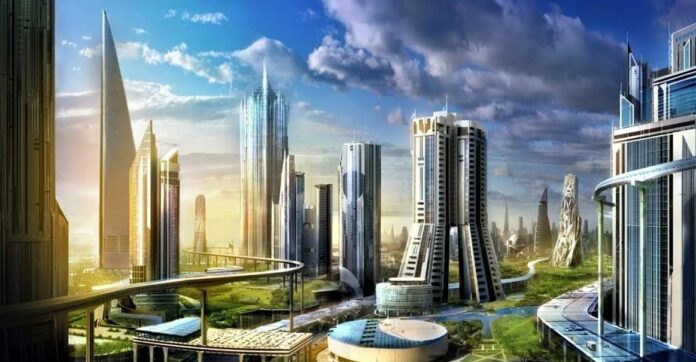The Ultimate Revolution and its Brave New World (fourth part) (English version at the end of this article)
Se știe că primăvara este anotimpul în care întreaga natură reînvie, revine la viață. Acesta nu mai era un credo în primăvara anului 1972. Când lansarea cărții „Limitele creșterii” vine cu acest mesaj teribil pentru omenire: viața umană trebuie limitată, altfel natura își va atinge limitele.
Mesajul accentuat puternic în timpul Conferinței de mediu de la Stockholm din vară, de-a lungul unei serii de documentare a Națiunilor Unite „Man Builds, Man Destroys” (https://www.youtube.com/watch?v=lDRpRautjrc) și/sau prin filmul „Limits to Growth” (https://www.youtube.com/watch?v=wYmdKTSzXio) purta cu sine o viziune asupra lumii pentru un singur Pământ.
Viziunea Clubului de la Roma pentru un guvern mondial
În perioada 5-16 iunie 1972, capitala Suediei a atras atenția la nivel mondial mai mult ca niciodată. Prima Conferință ONU despre Mediul Uman a reunit la Stockholm 1200 de delegați oficiali din 113 națiuni. Timp de mai bine de-o săptămână, întregul oraș a fost prins de conferință într-o mare agitație (vezi UN Archive – Only One Earth (1972), pe YouTube).
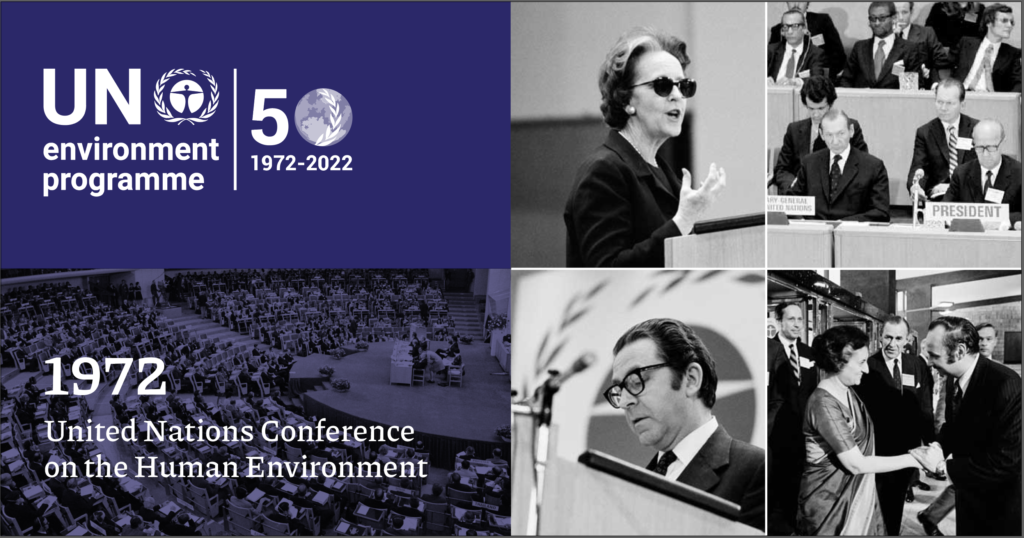
Simbolul conferinței apare peste tot, iar publicitatea sa atrage mii de observatori neoficiali. Guvernul suedez a oferit facilități pentru toți, inclusiv 200 de biciclete ecologice pentru delegați. Royal Opera House a găzduit ceremonia de deschidere. Delegații oficiali s-au adunat pe 5 iunie în prezența unor personalități de seamă precum regele Suediei, Gustaf Adolf al VI-lea. Aici l-au ascultat pe Secretarul General al Națiunilor Unite, domnul Kurt J. Waldheim, care a declarat criza de mediu o criză globală chiar în această primă zi.
Tema „Only One Earth” a întâmpinat dificultăți însă. Cum ar fi problema tehnică a modului în care lumea ar putea fi unificată când Uniunea Sovietică și majoritatea țărilor din Europa de Est au stat departe de Stockholm. Dezbaterea a continuat în cadrul unui Forum Internațional de Mediu, mai puțin oficial, nestructurat. La care a participat și autorul cărții „The Population Bomb”, Paul R. Ehrlich. Pentru domnul Ehrlich, ca și pentru mulți alți ecologiști convinși, problema celor bogați și a celor săraci nu putea fi separată de problema conservării mediului.
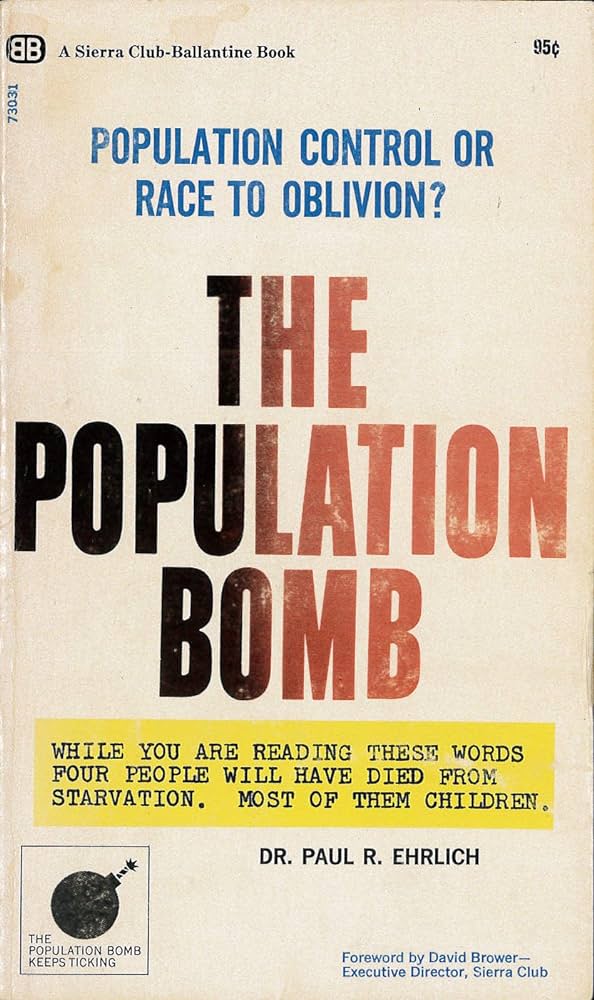
Astfel începem să ne divizăm în două tabere diferite, cum spunea Barry Commoner. Departe de a ne aduce împreună, toată această problemă de mediu, care este în mare parte politică, devine destul de periculoasă. Întrucât dezvăluie problema validității sistemului de întreprindere privată de exemplu. Sau întrebări dacă putem tolera războaiele, legate de discriminarea rasială: „Acestea sunt lucrurile pe care avem tendința de a evita să le discutăm. Odată cu problemele de mediu, un fel de lumină puternică este aruncată asupra lor, făcându-le foarte greu de evitat”, remarcase profesorul și politicianul american (Ibid. 9:49-10:34).
Conferința s-a încheiat dimineața devreme cu cea de-a 21-a ședință plenară din 16 iunie, în cadrul căreia a fost adoptată Declarația Conferinței ONU cu 26 de principii directoare pentru conservarea planetei. Un astfel de set de principii include, de asemenea, adoptarea unor politici adecvate privind creșterea naturală și solicită guvernelor naționale și cetățenilor să se alăture cu toții cooperării internaționale pentru conservarea și îmbunătățirea mediului uman (a se vedea Declarația ONU, principiile I) 5,7, din Raportul Conferinței Națiunilor Unite asupra mediului uman, Stockholm, 5-16 iunie 1972, pe HYPERLINK „https://digitallibrary.un.org/record/523249” https://digitallibrary.un.org/record/523249).
Modelul regionalizat și adaptativ al sistemului mondial global (17 septembrie 1973)
Conferința ONU de la Stockholm a arătat că lumea noastră se schimbă sau, mai bine spus, este schimbată. Și că ar putea fi unificată de dragul mediului. Într-un documentar britanic realizat de Thames Television pe cartea „Limitele creșterii”, Dennis Meadows și alți intervievați vorbesc despre „o societate de echilibru” sau „un sistem de stat stabil” care ar fi stabilit printr-o revoluție mondială (vezi documentarul The Limits to Growth (1973), pe YouTube).
Idee întărită de afirmația lui Aurelio Peccei din Intro-ul filmului: „Opțiunea noastră nu este între acest tip de societate (societatea actuală) și societatea de stat stabilă, ci între o societate de stat stabilă și haos” (Ibid. 3:29-3:37).
Viziunea reiese cumva din cartea „Limitele creșterii”. Dar, pentru prima dată, o vedem clar exprimată în raportul „Modelul regionalizat și adaptativ al sistemului mondial global” din 17 septembrie 1973. Care nu este altceva decât o strategie pentru proiectul de supraviețuire privind „Predicamentul omenirii”. Și prin care se cere Constituirea unui Sistem Mondial Global, așa cum rezultă din obiectivele i) și ii) ale raportului.
Acest sistem mondial sau sat global este împărțit în zece regiuni sau „regate”, altfel numite, care ar fi: America de Nord, Europa de Vest, Europa de Est, Japonia, Restul Lumii Dezvoltate, America Latină, Orientul Mijlociu, Restul Africii, Asia de Sud și de Sud-Est, și China (vezi Modelul regionalizat și adaptativ al sistemului mondial global, la HYPERLINK „https://vdocuments.mx/excerpts-from-regionalized-and-adaptive-model-of-the-global-world-system.html” https://vdocuments.mx/excerpts-from-regionalized-and-adaptive-model-of-the-global-world-system.html).
Când vorbește despre „societatea de echilibru” sau „statul stabil” în filmul „Limits to Growth”, Dennis Meadows neagă ideea unei societăți uniforme, dar nu pe cea a omului ca parte a unui sistem mondial total:
„Trebuie să fie o schimbare care să privească omul ca parte a unui sistem total mai degrabă decât ca oameni, o persoană căreia i s-a dat un sistem pentru exploatare. (…) Este important cred să ne dăm seama când vorbim despre acest stat stabil care descrie un număr mare de alternative posibile, nu vorbim de o societate uniformă care ar acoperi globul. Cu siguranță nu vorbim despre acest tip de uniformitate. Vorbim despre un sistem în care diferitele echilibre dintre producția materială și populație pot fi proiectate mai mult sau mai puțin pentru a se potrivi obiectivelor particulare ale unei societăți” (The Limits to Growth (1973): 7:43-7:51, 15:50-16:20).
Mai mult, el spune: „Echilibrul va fi o lume foarte diferită. Ar putea fi, de asemenea, o lume foarte variată. O lume cu tot felul de societăți” (Ibid.16:22-16:38). Dar simpla negare a uniformității de către Meadows nu înseamnă că ea nu ar putea fi realizată prin diversitate într-o societate foarte deschisă, la fel ca-n Brave New World a lui Aldous Huxley sau thriller-ul american al lui James Ponsoldt, The Circle (2017). Ideea unui sistem mondial total implică de fapt o societate uniformă. Cei doi termeni nu se exclud reciproc. Se află într-o relație de implicație.

Aceste condiții pentru o nouă ordine mondială fuseseră deja stabilite la Conferința de la Bellagio. După cele două războaie mondiale, Europa a fost transformată într-o uniune sau confederație de state, după cum sugerase diplomatul britanic Gladwyn Jebb (Stanley Hoffmann, p. 8). Noua zonă internațională ar fi cea de-a doua regiune pe harta sistemului mondial. Integrarea europeană a fost un exercițiu de pregătire nu numai pentru aderarea la Uniune, ci mai ales la acest sistem sau guvern mondial. Prin urmare, construcția guvernului mondial a început cu UE deoarece a fost mult mai ușor pentru elită s-o creeze după războaie; și se va încheia cu Uniunea Nord-Americană așa cum apare pe bancnota dolarului american (vezi „Placing the pieces to the puzzle” Part 1 Freemasons, The dollar bill, Fema Camps, Aug 12, 2011. De asemenea, vezi Wikipedia, Outline of the Post-War New World Map).
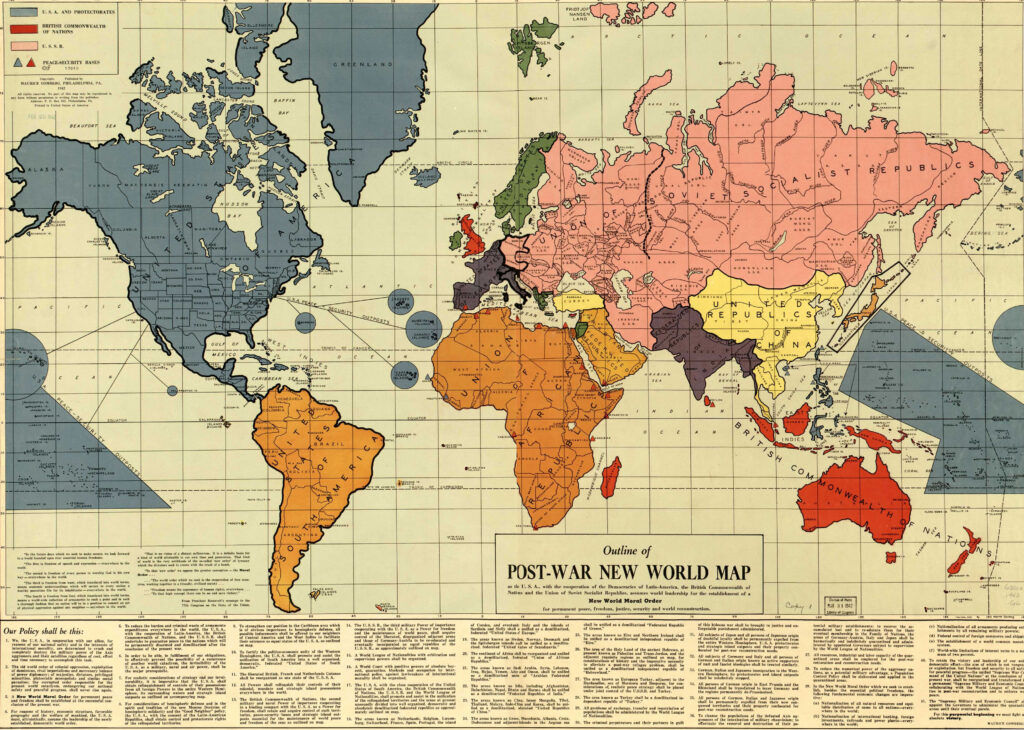
Structura ierarhică a sistemului mondial
Dacă Conferința de la Bellagio din anii ’65 a fost doar o întâlnire la nivel înalt în care s-au dezbătut termenii pentru o nouă ordine, odată cu Raportul Regionalizat din ’73 vedem deja o strategie clară prin care pot fi create aceste condiții, pe lângă cele deja existente, și pusă în practică ideea. Acest lucru este exprimat în raport când se spune că modelul sistemului mondial va avea două părți:
i. prima așa-numita parte cauzală, se referă „la procese dinamice care urmează modele istorice de dezvoltare”, și ii. a doua parte de căutare a obiectivelor, „care reprezintă schimbări intenționate în condiții noi”, legată de acțiuni și niveluri normative. În timp ce primei i se atribuie o componentă istorică cauzală, cealaltă oferă principiile, valorile și normele, creând astfel noile condiții pentru dezvoltarea acestui model.
Am putea spune că sistemul mondial este un sistem piramidal, având o structură ierarhică întocmai ca MLM-urile, cu o Corporație în vârf (Sheldon Wolin, Inverted totalitarism); în interiorul căruia fiecare regiune și ființă umană de pe această planetă va fi evaluată conform unui nou set de reguli și stabilit nivelul ei de evoluție: „A fost adoptată o structură ierarhică pentru model în care fiecare nivel din ierarhie reprezintă evoluția sistemului mondial într-un context definit de un set dat de legi și principii” (Mihajlo Mesarovic și Eduard Pestel).
Pentru aceasta, „un model computerizat al sistemului economic mondial a fost dezvoltat și validat printr-un set extins de date”. La nivel macro, evaluarea fiecărei regiuni „include produsul regional brut, importurile și exporturile totale, capitalul și productivitatea muncii, și diverse componente ale cererii finale cum ar fi consumul public, cheltuielile guvernamentale și investițiile totale”. În mod asemănător cu Modelul Economic al Regiunilor, la nivel micro a fost elaborat un Model al Populației Mondiale, reprezentând o Matrice Micro a Comerțului la scară completă, se menționează în raport (Ibid. Tot în această direcție, a se vedea și HYPERLINK „https://datatopics.worldbank.org/sdgatlas/archive/2017/the-world-by-region.html” https://datatopics.worldbank.org/sdgatlas/archive/2017/the-world-by-region.html, HYPERLINK „https://www.weforum.org/agenda/2016/02/the-map-that-will-change-how-you-see-the-world/” https://www.weforum.org/agenda/2016/02/the-map-that-will-change-how-you-see-the-world/).
În cele din urmă, implementarea modelelor regionale în diferite părți ale lumii se va face prin intermediul unei rețele de comunicații prin satelit, pentru evaluarea comună a viitorului global pe termen lung de către echipe din diferitele regiuni până când viziunea devine reală.
Aceeași viziune putea fi găsită mai târziu și-n Protocoalele de la Toronto: Documentul „Aurora Roșie” (1985), când elita face referire la noua ideologie a satului global, rețeaua electronică mondială sau la o vastă rețea de calculatoare: „ (…) în interiorul acestei „Noi Societăţi Globale”, niciun individ deţinător al unui potenţial de ,,Rentabilitate’’ pentru noi nu va putea să ne scape. Aportul constant al ,,tehnologiei electronice” va trebui să ne asigure toate mijloacele pentru a fişa, identifica şi controla pe toţi indivizii populaţiilor din Occident” (vezi Serge Monast, Protocoalele de la Toronto:„Aurora Roșie”. De asemenea, vezi The Mark of the Beast, pe HYPERLINK „https://www.bibliotecapleyades.net/sociopolitica/master_file/markbeast.htm” https://www.bibliotecapleyades.net/sociopolitica/master_file/markbeast.htm).
Începând cu World Wide Web, acest lucru va fi mult mai ușor de realizat. Poate din acest motiv s-a făcut o propagandă uriașă pentru microcipuri, 5G și toată tehnologia inteligentă în ultimii ani. Orice tehnologie smart însă care ar trebui să ne facă viața mai ușoară are o bază militară în realitate. E ceva ce nicio companie de lobby nu-l va spune. Că servește doar pentru controlul total al individului, așa cum s-a arătat în filmul documentar al lui Sacha Stone, 5G Apocalypse: The Extinction Event (vezi APOCALIPSA 5G (Subtitrare în Limba Română), pe YouTube).
Sună ca o tiranie? Ei bine, este. După cum a spus-o direct regizorul Aaron Russo în interviul cu Alex Jones, acest lucru a început cu mașina de tipărire a banilor din SUA, Rezerva Federală și legăturile sale strânse din lumea bancherilor. Care, pe lângă faptul că face bani, poate finanța și o viziune asupra lumii (vezi Ultimul interviu al lui Aaron Russo luat de Alex Jones în 2007, cu dezvăluiri cutremurătoare, Jun 5, 2013, pe YouTube).
Raportul „Remodelarea ordinii internaționale” (1976)
Dezbaterile privind modelarea ordinii internaționale nu s-au oprit la Conferința de la Bellagio și nici la Stockholm. Acestea au fost continuate cu cel de-al treilea Raport al Clubului de la Roma, Remodelarea ordinii internaționale (RIO). Raportul coordonat de profesorul emerit și economistul olandez Jan Tinbergen a fost anunțat mai curând ca o „contribuție la dialog” decât ca o viziune asupra noii ordini, deși începuse cu aceste conferințe, sesiuni plenare ale Adunării Generale ONU:
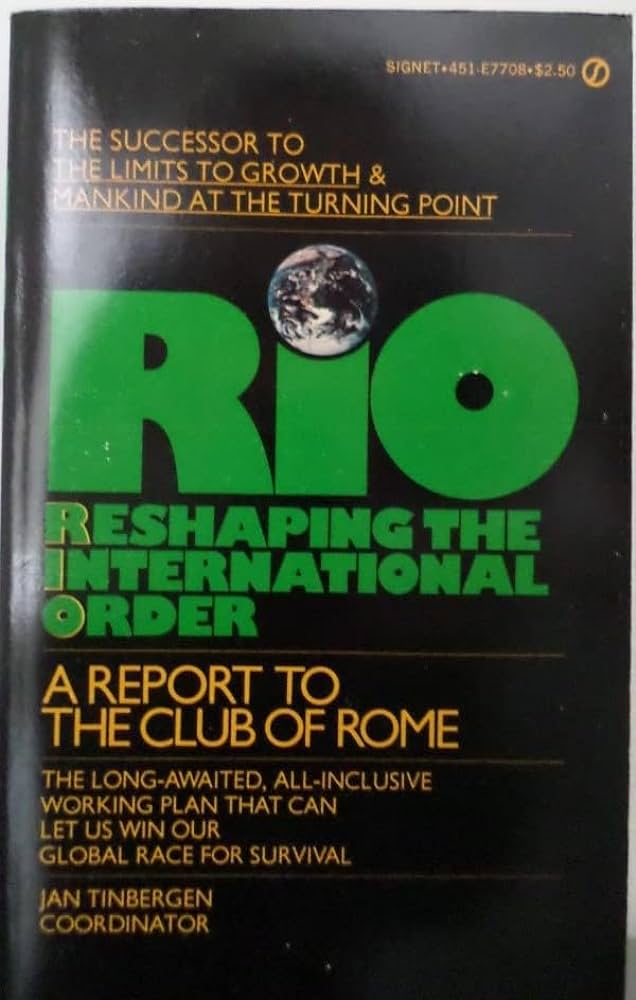
„În octombrie a fost publicat al treilea raport adresat Clubului de la Roma sub titlul Re-shaping the International Order (RIO). El a fost formulat de un grup de aproximativ douăzeci de experți din țările în curs de dezvoltare și dezvoltate, inclusiv unul din România. Inițiativa de a întreprinde acest studiu al ordinii internaționale a fost luată de Consiliul de Administrație al Clubului de la Roma, în special de către președintele său, Dr. Aurelio Peccei, iar studiul a fost finanțat de Ministerul Afacerilor Externe al Țărilor de Jos la inițiativa Ministrului Cooperării pentru Dezvoltare, Jan Pronk. Raportul a fost prezentat Clubului de la Roma într-o întâlnire la Alger, găzduită de guvernul algerian, între 25-28 octombrie 1976” (vezi Remodelarea ordinii internaționale (RIO), la HYPERLINK „https://repub.eur.nl/pub/7970/1976Futurespdf.pdf” https://repub.eur.nl/pub/7970/1976Futurespdf.pdf).
Și chiar dacă experții în cooperarea internațională care au pregătit documentul susțin că are doar o bază tehnică și științifică, influența asupra politicii mondiale nu poate fi negată așa cum rezultă din conținutul său:
Partea întâi solicită necesitatea unei Noi Ordini Internaționale și se ocupă de principalele zone cu probleme, are în atenție „decalajul tot mai mare dintre bunăstarea țărilor dezvoltate și celor în curs de dezvoltare”; 2) În timp ce partea a doua se referă la arhitectura acestei Ordini Internaționale, la cum ar putea fi derivată printr-un aparat conceptual și s-ar putea atinge scopul ei de bunăstare maximă și de eradicare a sărăciei. Aceasta a mai fost numită și „socialism umanist” și a cerut reinterpretarea conceptului de suveranitate națională, la fel ca la Conferința de la Bellagio; în sfârșit, prin părțile 3) și 4) se fac propuneri pentru acțiune și declarate grupurile de lucru (Ibid.).
Ordinea Internațională ar fi și rezultatul conferințelor IUCN (International Union for the Conservation of Nature) de la sfârșitul anilor ’70 și începutul anilor ’80. A acordurilor moderne CITES (Convention on International Trade of Endangered Species), Programului UNESCO „Omul în biosferă și Tratatul patrimoniului mondial” (Wikipedia, Man and the Biosphere Programme).
De atunci și începând cu aceste conferințe mondiale, tratate a apărut ideea că oamenii degradau resursele naturale și că singura modalitate de a le conserva și proteja împotriva lor era printr-un sistem sau guvern mondial. Aceasta a înlocuit viziunea antropocentrică iudeo-creștină cu viziunea biocentrică, îmbrățișată mai ales de ecologiști, conservatori și biologi. A dus la apariția multor organizații de mediu, precum Sierra Club Nature Conservancy, WILD Foundation. De asemenea, la 4th World Wilderness Congress (din septembrie 1987), proiectul Wildlands, și așa mai departe.
Ideea de a crea zone sălbatice sau zone tampon protejate de legile mediului s-a datorat astfel unor ONG-uri, mai ales proiectului Wildlands al lui Dave Foreman (cunoscut și sub numele de Wildlands Network). Proiectul, conceput pentru a implementa scopurile și obiectivele programului UNESCO „Omul în biosferă”, a fost publicat pentru prima dată în 1992 în Wild Earth. Totuși, viziunea se intersectează destul de bine cu cea a Raportului Regionalizat în crearea acelor zone internaționale. După cum ne-a lăsat George Hunt să înțelegem cu privire la Wilderness Congress, a patra lume le va înghiți pe a treia și celelalte lumi într-una singură (Lamb, Henry; George W. Hunt. A se vedea și Wikipedia, Wildlands Network).
Prima revoluție globală (1991)
La 09/11, George H.W. Bush – Tatăl – în discursul său către Congresul american privind criza Golfului Persic de prin anii ’90 vorbește despre o Lume Nouă care urmează să se nască, care poate ieși din această nouă ordine internațională:
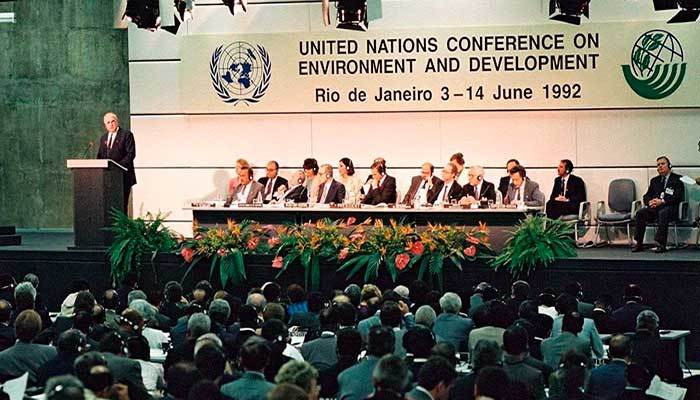
„Ne aflăm astăzi într-un moment unic și extraordinar. Criza din Golful Persic, pe cât de gravă este, oferă, de asemenea, o oportunitate rară de a trece către o perioadă istorică de cooperare. Din aceste vremuri tulburi, al cincilea obiectiv al nostru – o nouă ordine mondială – poate apărea: o nouă eră – mai eliberată de amenințarea terorii, mai puternică în căutarea dreptății și mai sigură în căutarea păcii. O epocă în care națiunile lumii, de la Est și Vest, Nord și Sud, pot prospera și trăi în armonie. O sută de generații au căutat această cale vagă (iluzorie) către pace, în timp ce o mie de războaie au izbucnit de-a lungul eforturilor umane. Astăzi, acea lume nouă se luptă să se nască, o lume cu totul diferită de cea pe care am cunoscut-o” (vezi George H.W. Bush describes the New World Order in his address to the US Congress on the Crisis in the Persian Gulf, pe HYPERLINK „https://www.c-span.org/video/?c4528359/user-clip-george-bush-defines-world-order” https://www.c-span.org/video/?c4528359/user-clip-george-bush-defines-world-order).
Declarațiile sale au fost ca un ecou pentru Prima Revoluție Globală, un alt Raport al Consiliului Clubului de la Roma publicat un an mai târziu, pe 3 septembrie, unde citim la fel despre o perioadă a Marii Tranziții, criza Războiului din Golf care ar trebui să ducă la o nouă viziune asupra relațiilor internaționale și la un nou tip de societate mondială:
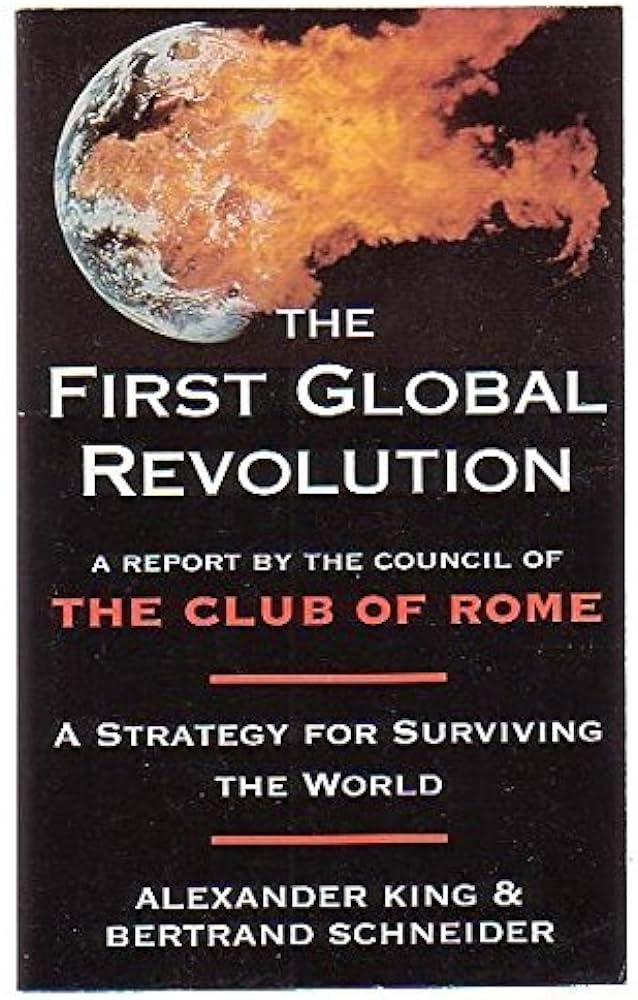
„Suntem convinși că ne aflăm în fazele incipiente ale formării unui nou tip de societate mondială care va fi la fel de diferită de cea de azi precum a fost cea a lumii introdusă de Revoluţia Industrială de societatea lungii perioade agrare care a precedat-o pe ea. Forța inițială, dar deloc doar motrică a acestei schimbări, a fost apariția unui grup de tehnologii avansate, în special cele făcute posibile prin microelectronică și de către noile descoperiri ale biologiei moleculare.”, „Războiul din Golf e prima ilustrare a unei serii de fenomene care, cu siguranță, vor cântări greu asupra lumii în următoarele decenii. În multe privințe este un semnal de avertizare și ar trebui să ducă la o nouă viziune asupra relațiilor internaționale” (vezi The First Global Revolution: Introduction, pp. xix, xx, pe HYPERLINK „https://www.clubofrome.org/publication/the-first-global-revolution-1991/” https://www.clubofrome.org/publication/the-first-global-revolution-1991/).
Acest nou tip de societate, spune raportul, va răsări din cenușa celor vechi. Ea va fi adusă de o revoluție universală, de schimbări simultane care vor părea la fel de omniprezente în întreaga lume și care vor provoca ștergerea definitivă a societăților arhaice, a întregii vieți primitive (Ibid., pp. xxii-xxiii). Interesant cum se apropie acest lucru de definiția războiului hibrid, iar întrebarea este de unde și-au luat occidentalii lecțiile, l-au învățat?
Un viitor război care nici măcar nu este negat de către raport:
„Criza din Golf poate fi o pregustare a multor conflicte care vor urma, nu neapărat doar sub forma confruntării Nord-Sud, ci legate de resurse, inclusiv disponibilitatea de energie și hrană, presiunile populației, și animozitățile etnice și religioase. Într-o lume pluralistă cu multe diferențe culturale, etnice și religioase” (Ibid., pp. 13-14).
Și care, cel mai probabil, va fi:
„Războaiele dintre țări din interiorul unui bloc sau dintre blocuri sunt cel mai probabil economice decât militare. În acest sens, rolul viitor al corporațiilor transnaționale va deveni probabil din ce în ce mai important, deoarece interesele și structurile lor ar pătrunde în toate blocurile” (Ibid.).
Acest lucru se confirmă și prin declarațiile lui Saddam Hussein cu privire la „cei care forțează prețul petrolului să scadă se angajează într-un război economic”, dezvăluite printr-o telegramă trimisă de ambasadorul April Glaspie Departamentului de Stat american, la 25 iulie 1990 (vezi Saddam’s Message of Friendship to President Bush (TE), pe HYPERLINK „https://wikileaks.org/plusd/cables/90BAGHDAD4237_a.html” https://wikileaks.org/plusd/cables/90BAGHDAD4237_a.html).
În loc de concluzii: Fabula lui Aldous Huxley și viziunea Clubului de la Roma
Când Aldous Huxley și-a scris fabula în 1931/32, exista o singură viziune cu privire la împărțirea lumii care l-ar fi putut inspira, cea a lui Coudenhove-Kalergi. Povestea și viziunea sa însă despre un stat mondial stabil împărțit în zece zone este mult mai apropiată de cea din Raportul Regionalizat, publicat pentru prima dată în anii ’73.
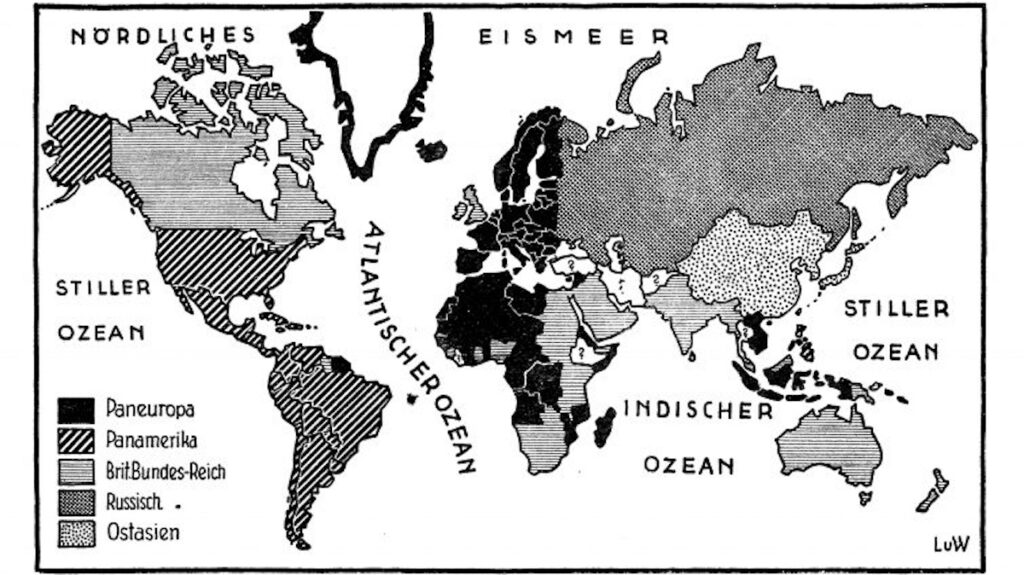
Statul și societatea Brave New World sunt „statul stabil” și „societatea de echilibru” a lui Dennis Meadows, guvernarea sau sistemul mondial total din Raportul regionalizat, cea de-a patra lume a lui William Clissold, Republica Mondială lui H.G. Wells. Viziunea se apropie și de cea a lui Jay Forrester din „World Dynamics” și din proiectul „Wildlands” al lui Dave Foreman, cu orașe inteligente înconjurate de zone sălbatice.
Astăzi se construiesc orașe inteligente în unele zone ale lumii unde nimeni nu s-ar fi așteptat, cum ar fi orașul futurist Neom din Arabia Saudită, care ne oferă o viziune asupra noului viitor (vezi Deutsche Welle). În fabula lui Huxley, New London (centrul de putere al statului mondial) este proiectat pentru a fi un oraș inteligent. Statul Mondial, cu orașe inteligente, înconjurate de zone sălbatice precum Rezervația Naturală din New Mexico, are zece Controlori Mondiali. Mustapha Mond, unul dintre ei, joacă rolul de Rezident Controlor al Lumii pentru Europa de Vest (BNW).
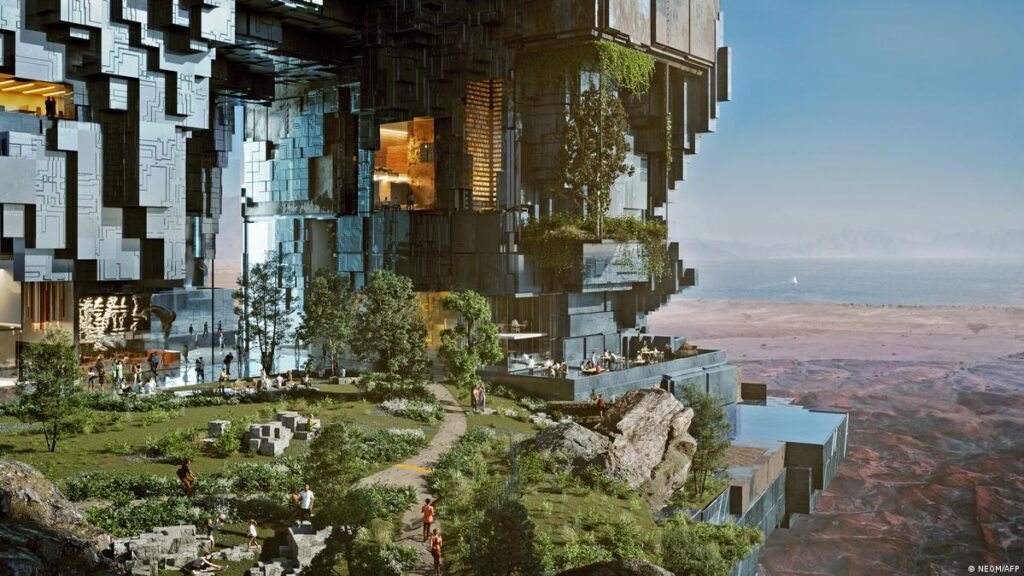
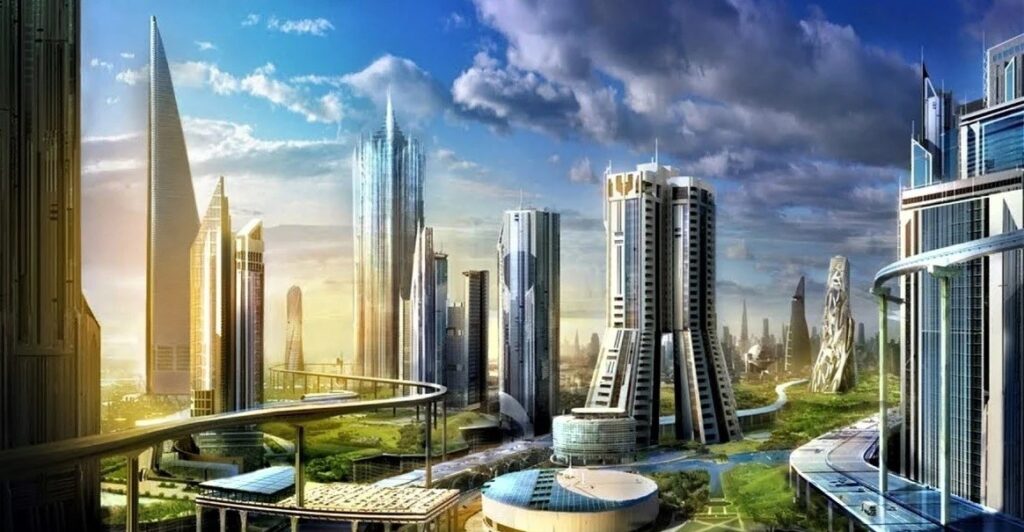
Pentru a-și relata povestea, Huxley folosește multe simboluri. Statul lumii este guvernul mondial al Națiunilor Unite, având Corporația „Orașul Londrei” în vârful piramidei cu bancherii ei de pe Wall Street, și baroni ca Sir Alfred Mond (Mustapha Mond). Și-a îmbrăcat fabula într-un adevăr dur, unul dintre acele adevăruri nevăzute și nespuse nici măcar la știri.
În societatea BNW, Ford și invențiile sale sunt venerate ca zeii. Idolatria este indicată prin înlocuirea crucii creștine cu „T-ul” de la primul său model de mașină. De asemenea, de către Biserica Nouă care cade pradă materialității și senzualității de orice fel, în care Henry Ford este adorat ca însuși Dumnezeu. Huxley nu e lipsit de ironie aici. Dar mai mult decât atât, el are o viziune terifiantă a unei viitoare societăți totalitare care se află sub dictatura, tirania acestei Biserici Noi și a guvernului mondial. Menționată și de Serge Monast în Protocoalele de la Toronto, Starețul Lavrentie de la Cernigov în profețiile sale.
Acest lucru îl face pe Aldous Huxley să fie una dintre cele mai strălucite minți ale secolului trecut. La vremea sa, Huxley era o voce singulară care ne-a avertizat cu privire la această dictatură viitoare. Poate din acest motiv cartea sa nu a fost prea bine primită în rândul elitiştilor.
În interviul lui Mike Wallace și Conferința de la Berkeley despre Ultima Revoluție, el spune că această dictatură mondială va fi stabilită într-un mod mult mai facil decât oricare alte dictaturi din trecut. Fără a folosi mijloacele torturii și ale durerii, pe calea armelor. Deci într-un mod mult mai pașnic, prin utilizarea tehnologiilor foarte avansate ale viitorului care doar în aparență par a fi inofensive. Celor ce ar putea crede că acest lucru nu s-ar putea întâmpla sub capitalism, le voi spune că există deja un precedent în istorie: dictatura corporatistă Estado Novo a lui António de Oliveira Salazar, care a constituit unul dintre cele mai longevive regimuri autoritare din Europa (vezi Wikipedia, António de Oliveira Salazar).
Nostim că viziunea lui Aurelio Peccei a prins contur pornind de la poziția sa împotriva fascismului și comunismului. Dar lumea lui perfectă s-ar putea termina ca cea a lui Salazar; sau Hegel, la fel ca șarpele care se întoarce în cerc și-și înghite coada punând capăt istoriei. Dacă prețul pentru așa-zisa „pace” este o dictatură mult mai mare decât oricare alta trecută sau prezentă, care se va termina cu pierderea drepturilor și libertății noastre, atunci e prea scump pentru a fi plătit și nu merită.
Ana-Maria Caminski
Corespondent in Romania, pentru NASUL TV Canada
The Ultimate Revolution and its Brave New World (fourth part)
It is known that spring is the season when all of nature revives, comes back to life. This was no longer a credo in the spring of 1972. When the ‘Limits to Growth’ Book release came with this terrible message for mankind: human life must be limited, otherwise nature will reach its limits.
The message strongly emphasized during the Stockholm Environmental Conference in the summer, throughout a United Nations Documentary Series ‘Man Builds, Man Destroys’ and/or by the ‘Limits to Growth’ film has carried with it a worldview for only one Earth.
Club of Rome’s vision for a world government
On 5th-16th of June 1972, the capital of Sweden attracted worldwide attention more than ever. The first UN Conference on the Human Environment reunited 1200 official delegates from 113 nations in Stockholm. For more than a week, the whole city was caught up with the conference in a great buzz (see the UN Archive – Only One Earth (1972), on YouTube).
The conference symbol appears everywhere, and its publicity attracted thousands of unofficial observers. Swedish government provided facilities for all of them, including 200 ecologically bicycles for the delegates. Royal Opera House hosted the opening ceremony. Official delegates gathered on June 5th in the presence of notable personalities like the King of Sweden, Gustaf VI Adolf. Here they listened to the Secretary General of the United Nations, Mr. Kurt J. Waldheim, who declared the environmental crisis a global crisis on this very first day.
But the theme ‘Only One Earth’ encountered difficulties. Such as the technical question of how the world might be unified when the Soviet Union and most eastern European countries stayed away from Stockholm. The debate continued within a less official, unstructured International Environment Forum. Which has been attended also by the author of ‘The Population Bomb’, Paul R. Ehrlich. To Mr. Ehrlich, as for many others convinced ecologists, the question of the rich and the poor could not be separated from the question of preserving the environment.
Thus we’re beginning to split up into two different camps, as Barry Commoner said. Far from bringing us together, this whole environmental issue, which is mostly political, is becoming quite dangerous. Because it reveals the question of validity of the private enterprise system for example. Or questions of whether we can tolerate wars, related to racial discrimination: “These are things that we tend to avoid talking about. With the environmental issues, sort of casts a bright light on them, making them very difficult to avoid”, remarked the American professor and politician (Ibid. 9:49-10:34).
The Conference ended in the early morning with the 21st plenary meeting on June 16th, in the frame of which there was adopted the Declaration of the UN Conference with 26 guiding principles for the preservation of our planet. Such a set of principles includes, also, the adoption of adequate policies on natural growth and demands that national govs and their citizens that they all join International cooperation for the preservation and improvement of the human environment (see the UN Declaration, principles I) 5,7, in the Report of the United Nations Conference on the Human Environment, Stockholm, 5-16 June 1972, at HYPERLINK „https://digitallibrary.un.org/record/523249” https://digitallibrary.un.org/record/523249).
The Regionalized and Adaptive Model of the Global World System (September 17, 1973)
UN Stockholm Conference showed that our world was changing or, better said, is being changed. And that it might be unified for the sake of the environment. In a Thames Television UK documentary on the ‘Limits to Growth’ book, Dennis Meadows and other interviewees speak about ‘an equilibrium Society’ or ‘a stable State system’ that would be established by a World Revolution (see The Limits to Growth documentary (1973), on YouTube).
Idea strengthened by Aurelio Peccei’s statement from the Intro of the film: “Our option is not between this kind of society (present society) and the stable State Society, it is between a stable State society and chaos” (Ibid. 3:29-3:37).
The vision transpires somehow from the ‘Limits to Growth’ book. But for the first time, we see it clearly expressed in ‘The Regionalized and Adaptive Model of the Global World System’ report from September 17, 1973. Which is nothing more than a Strategy for the Survival project on ‘The Predicament of Mankind’. And by which is demanded the Constitution of a Global World System, as it follows from objectives i) and ii) of the report.
This world system or global village is divided into ten regions or ‘kingdoms’, otherwise called, that would be: North America, Western Europe, Eastern Europe, Japan, the Rest of the Developed World, Latin America, Middle East, Rest of Africa, South and Southeast Asia, and China (see the Regionalized and Adaptive Model of the Global World System, at HYPERLINK „https://vdocuments.mx/excerpts-from-regionalized-and-adaptive-model-of-the-global-world-system.html” https://vdocuments.mx/excerpts-from-regionalized-and-adaptive-model-of-the-global-world-system.html).
When he speaks about the ‘equilibrium Society’ or ‘stable State’ in the ‘Limits to Growth’ film, Dennis Meadows denies the idea of a uniform society but not that of the man as part of a total world system:
“Has to be a shift which views man as part of a total system rather than as men, a person who has been given a system for his exploitation. (…) It’s important I think to realize when we talk about this stable state that describes a large number of possible alternatives, we’re not talking about some uniform society that would blanket the globe. Certainly not talking about that type of uniformity. We’re talking about a system in which the various balances between material output and population can be engineered more or less to suit the particular objectives of a society” (The Limits to Growth documentary (1973): 7:43-7:51, 15:50-16:20).
Further, he says: “Equilibrium will be a very different world. It could also be a very varied world. A world with all kinds of societies” (Ibid.16:22-16:38). But the simple denial of uniformity by Meadows doesn’t mean that it could not be realized through diversity in a very open society, just like in Aldous Huxley’s Brave New World or the American techno-thriller of James Ponsoldt, The Circle (2017). The idea of a total world system implies actually a uniform society. The two terms are not mutually exclusive. They are in an implication relationship.
These conditions for a new world order were already settled at the Bellagio Conference. After the two world wars, Europe was transformed into a union or confederation of states, just as the British diplomat Gladwyn Jebb suggested (Stanley Hoffmann, p. 8). The new International area would be the second region on the world system map. European integration was a preparation exercise not only for the adherence to the Union but mostly to this world system or government. Hence, the construction of the world government started with the EU because it was much easier for the elite to create it after the wars; and will end with the North American Union as it appears on the US $ one-dollar bill (see „Placing the pieces to the puzzle” Part 1 Freemasons, The dollar bill, Fema Camps, Aug 12, 2011. Also see Wikipedia, Outline of the Post-War New World Map).
The hierarchical structure of the world system
If the ’65s Bellagio Conference was just a high-level meeting where the terms for a new order were debated, with the ’73s Regionalized Report we already see a clear strategy by which can be created these conditions, besides those already existing, and put into practice the idea. This has been explicitly expressed in the report when is been saying that the model of the world system will have, therefore, two parts:
i. the first so-called causal part, it refers “to dynamical processes that follow historical development patterns”, and ii. the second goal-seeking part, “which represents purposive changes under new conditions”, related to the actions and normative levels. While the former is assigned a causal historical component, the other offers the principles, values, and norms, creating thus new conditions for developing this world system model.
We could say that the total world system it’s a pyramidal system, having a hierarchical structure like MLMs, with a Corporation at the top (Sheldon Wolin, Inverted totalitarianism); inside which each region and human being from this planet will be evaluated according to a new set of rules and settled its level of evolution: “A hierarchical structure has been adopted for the model in which each level in the hierarchy represents the evolution of the world system within a context defined by a given set of laws and principles” (Mihajlo Mesarovic and Eduard Pestel).
For this, “a computer model of the world economic system has been developed and validated by an extensive set of data”. On the macro level, the evaluation of each region “includes the gross regional product, total imports and exports, capital and labor productivity, and various components of final demand such as public consumption, government expenditure, and total investment”. In a similar way to the Economic Model of Regions, a World Population Model has been developed on the micro level, representing a Full-Scale Micro Trade Matrix, mentions the report (Ibid. To be seen also HYPERLINK „https://datatopics.worldbank.org/sdgatlas/archive/2017/the-world-by-region.html” https://datatopics.worldbank.org/sdgatlas/archive/2017/the-world-by-region.html, HYPERLINK „https://www.weforum.org/agenda/2016/02/the-map-that-will-change-how-you-see-the-world/” https://www.weforum.org/agenda/2016/02/the-map-that-will-change-how-you-see-the-world/).
Lastly, the implementation of the regional models in different parts of the world will be made via a satellite communication network, for joint assessment of the long-term global future by teams from the various regions until the vision becomes real.
The same vision could later be found in the Toronto protocols: The ‘Red Dawn’ Document (1985), when the elite refers to the new ideology of the Global Village Community, a World Network, or a vast Network of Computers: “(…) inside this „New Global Society”, no individual having a potential of „Profitability” for us, cannot escape us. The constant contribution of the „Electronic Technology” will have to assure us all the means to file, identify, and control all the individuals of the populations of the West” (see Serge Monast, Toronto protocols: The ‘Red Dawn’Document. Also, see The Mark of the Beast, on HYPERLINK „https://www.bibliotecapleyades.net/sociopolitica/master_file/markbeast.htm” https://www.bibliotecapleyades.net/sociopolitica/master_file/markbeast.htm).
By starting with the World Wide Web, this will be much easier to achieve. Maybe for this reason, it has been made huge propaganda for microchips, 5G, and all the smart technology in the last years. But any smart technology that is supposed to make our lives easier has a military base in reality. That’s something no lobby company won’t tell. That it serves only for the total control of the individual, as has been shown in the documentary film of Sacha Stone, 5G Apocalypse: The Extinction Event (see APOCALIPSA 5G (Subtitrare în Limba Română), on YouTube).
Does it sound like a tyranny? Well, it is. As the filmmaker Aaron Russo has put it directly in the interview with Alex Jones, this began with the US print money machine, the Federal Reserve, and its close ties to the world of bankers. Which, besides making money, can also finance a worldview (see Reflections & Warnings-An Interview with Aaron Russo (FULL), Aug 18, 2013, on YouTube).
‘Reshaping the International Order’ Report (1976)
The debates regarding the shaping of the international order did not stop at the Bellagio Conference nor to Stockholm. Those were continued with the third Report of the Club of Rome, Reshaping the International Order (RIO). The report coordinated by the professor emeritus and Dutch economist Jan Tinbergen was announced rather as a ‘contribution to the dialogue’ than as a NWO worldview, although it started with these conferences, plenary sessions of the UN General Assembly:
“In October the third report to the Club of Rome was published under the title Re-shaping the International Order (RIO). It was formulated by a group of about twenty experts from developing as well as developed countries, including one from Romania. The initiative to undertake this study of the international order was taken by the Club of Rome Board, especially by its chairman Dr. Aurelio Peccei and the study was financed by the Netherlands Ministry of Foreign Affairs at the initiative of the Minister for Development Cooperation, Jan Pronk. The report was presented to the Club of Rome in a meeting at Algiers, hosted by the Algerian Government, 25-28 October 1976” (see Reshaping the International Order (RIO), at HYPERLINK „https://repub.eur.nl/pub/7970/1976Futurespdf.pdf” https://repub.eur.nl/pub/7970/1976Futurespdf.pdf).
And even if the experts in international cooperation that have prepared the document claim it to have only a technical and scientific basis, his influence in world politics is something that cannot be denied, as how it results from its content:
Part one calls for the need for a New International Order and deals with the main problem areas, has in attention “the widening gap in well-being between developed and developing countries”; 2) While part two concerns the architecture of this International Order, on how it could be derived through a conceptual apparatus and attain its goal of maximum welfare, and of the eradication of poverty. This has been called also ‘humanistic socialism’ and asked for the reinterpretation of the national sovereignty concept, so as at the Bellagio Conference; finally, by the 3) third and 4) fourth parts are made proposals for action and declared the working groups (Ibid.).
International Order would be also the result of the IUCN conferences (International Union for the Conservation of Nature) from the late ’70s and the early ’80s. Of the modern agreements CITES (Convention on International Trade of Endangered Species), UNESCO’s ‘Man in the Biosphere Program and the World Heritage Treaty’ (see Wikipedia, Man and the Biosphere Programme).
Ever since then and beginning with these world conferences, treaties it appeared the idea that humans were degrading natural resources and that the only way to preserve and protect against them was through a world system or government. This has replaced the Judeo-Christian anthropocentric view with the Biocentric view, embraced mostly by environmentalists, conservationists, and biologists. It has led to the apparition of many environmental organizations, like the Sierra Club Nature Conservancy, WILD Foundation. Also, to the 4th World Wilderness Congress (from September 1987), the Wildlands Project, and so on.
The idea of creating wilderness areas or buffer zones protected by environmental laws was due so to some NGOs, mostly to Dave Foreman’s Wildlands Project (also known as Wildlands Network). The project, designed to implement the goals and objectives of UNESCO’s ‘Man in the Biosphere Program’, was first published in 1992 in Wild Earth. However, the vision intersects quite well with the one of The Regionalized Report in creating those International areas. As George Hunt let us understand regarding the Wilderness Congress, the 4th World will swallow the third and the other worlds into One (Lamb, Henry; George W. Hunt. To be seen also Wikipedia, Wildlands Network).
The First Global Revolution (1991)
On 09/11, George H.W. Bush – the Father – in his address to the US Congress on the Persian Gulf Crisis of the ’90s speaks about a New World that is up to be born, which can emerge from this new international order:
“We stand today at a unique and extraordinary moment. The crisis in the Persian Gulf, as grave as it is, also offers a rare opportunity to move toward a historic period of cooperation. Out of these troubled times, our fifth objective – a new world order – can emerge: a new era – freer from the threat of terror, stronger in the pursuit of justice, and more secure in the quest for peace. An era in which the nations of the world, East and West, North and South, can prosper and live in harmony. A hundred generations have searched for this elusive path to peace, while a thousand wars raged across the span of human endeavor. Today that new world is struggling to be born, a world quite different from the one we’ve known” (see George H.W. Bush describes the New World Order in his address to the US Congress on the Crisis in the Persian Gulf, at HYPERLINK „https://www.c-span.org/video/?c4528359/user-clip-george-bush-defines-world-order” https://www.c-span.org/video/?c4528359/user-clip-george-bush-defines-world-order).
His statements were like an echo for The First Global Revolution, another Report of the Council of the Club of Rome published a year later, on September 3, wherein we read as well about a period of Great Transition, the Gulf War crisis that should lead to a new vision of international relations and a new type of world society:
“We are convinced that we are in the early stages of the formation of a new type of world society which will be as different from today’s as was that of the world ushered in by the Industrial Revolution from the society of the long agrarian period that preceded it. The initial, but by no means only motor force of this change has been the emergence of a cluster of advanced technologies, especially those made possible by microelectronics and the new discoveries of molecular biology.”, “The Gulf War is the first illustration of a series of phenomena that will most certainly lie heavy on the world in the coming decades. It is in many ways a warning signal and should lead to a new vision of international relations” (see The First Global Revolution: Introduction, pp. xix, xx, at HYPERLINK „https://www.clubofrome.org/publication/the-first-global-revolution-1991/” https://www.clubofrome.org/publication/the-first-global-revolution-1991/).
This new type of society, says the report, will rise from the ashes of the old ones. It will be brought by a universal revolution, of simultaneous changes that will look to be likewise ubiquitous all over the world, and that will cause the definitively erase of the archaic societies, of the entire primitive life (Ibid., pp. xxii-xxiii). Interesting how this is getting closer to the definition of hybrid warfare, and the question is where did the Westerners get their lessons, did they learn it?
A future warfare that is not even denied by the report:
“The Gulf crisis may be a foretaste of many conflicts to come, not necessarily only in the form of North-South confrontation, but related to resources including energy and food availability, population pressures, and ethnic and religious animosities. In a pluralistic world with many cultural, ethnic, and religious differences” (Ibid., pp. 13-14).
And which, most probably, will be:
“Wars between countries within a bloc or between blocs are more likely to be economic than military. In this connection, the future role of transnational corporations will probably become increasingly important, since their interests and structures would permeate all the blocs” (Ibid.).
Confirmed also by Saddam Hussein’s statements regarding “those who force oil prices down are engaging in economic warfare”, revealed by a sent telegram of Ambassador April Glaspie to the US State Department, on July 25, 1990 (see Saddam’s Message of Friendship to President Bush (TE), at HYPERLINK „https://wikileaks.org/plusd/cables/90BAGHDAD4237_a.html” https://wikileaks.org/plusd/cables/90BAGHDAD4237_a.html).
Instead of conclusions: Aldous Huxley’s fable and the Club of Rome’s worldview
When Aldous Huxley wrote his fable in 1931/32, there was only one vision regarding the world’s division that could have inspired him, the one of Coudenhove-Kalergi. However, his story and vision of a stable world state divided into ten zones is much closer to the one from the Regionalized Report, published for the first time in the ’73s.
Brave New World state and society are the ‘stable State’ and ‘equilibrium Society’ of Dennis Meadows, the total world system or government from the Regionalized Report, the 4th World of William Clissold, World Republic of H.G. Wells. His view approaches also the one of Jay Forrester from the ‘World Dynamics’ and of Dave Foreman’s Wildlands Project, with smart cities surrounded by wilderness areas.
Today smart cities are being built in some areas of the world where nobody would have expected, like the futuristic city Neom of Saudi Arabia, which offers us a view of the new future (see Deutsche Welle). In Huxley’s fable, New London (World State’s center of power) is designed to be a smart city. The World State, with smart cities, surrounded by wild areas such as the Natural Reservation from New Mexico, has ten World Controllers. Mustapha Mond, one of them, plays the role of the Resident World Controller for Western Europe (BNW).
To relate his story, Huxley makes use of many symbols. World State is the world government of the United Nations, having the Corporation ‘City of London’ at the top of the pyramid with its world-ruling bankers of the Wall Street, and barons like Sir Alfred Mond (Mustapha Mond). He dressed his fable into a hard truth, one of those unseen and unspoken truths not even on the news.
In the BNW society, Ford and his inventions are worshiped like Gods. Idolatry is indicated by replacing the Christian cross with the ‘T’ from the first model machine. Also, by the New Church that falls prey to materiality and sensuality of any kind, wherein Henry Ford is being worshiped as God himself. Huxley is not without irony here. But more than that, he has a terrifying vision of a future totalitarian society being under the dictatorship, the tyranny of this New Church and world government. Mentioned as well by Serge Monast in the Toronto protocols, Starets Lavrentii of Chernigov in his prophesies.
This makes Aldous Huxley to be one of the brightest minds of the last century. At his time, Huxley was a singular voice who warned us regarding this upcoming dictatorship. Maybe for this reason his book was not too well-received amongst the elitists.
In Mike Wallace’s interview and the Berkeley Conference on The Ultimate Revolution, he says that this world dictatorship will be established in a much easier way than any other past dictatorships. Without using the means of torture and pain, on the arms way. So in a much more peaceful way, by using very advanced technologies of the future that only apparently seem to be harmless. To those who might believe this could not happen under capitalism, I’ll say there is already a precedent in history: the Corporatist Estado Novo dictatorship of António de Oliveira Salazar, who constituted one of the longest-lived authoritarian regimes in Europe (Wikipedia, António de Oliveira Salazar).
Funny that Aurelio Peccei’s vision took shape starting from his position against fascism and communism. But his perfect world might end just like the one of Salazar; or Hegel, the same as the snake that turns in a circle and swallows its tail ending history. If the price for the so-called ‘peace’ is a much bigger dictatorship than any other past or present, which will finish with the loss of our rights and freedom, then it is too expensive to be paid and isn’t worth it.
This article, alongside the other three parts, was inspired by Brave New World book and written in memory of Aldous Huxley, one of the greatest novelists and thinkers of the 20th century.
References
Club of Rome. Mesarovic, Mihajlo, and Eduard Pestel. Regionalized and Adaptive Model of the Global World System: Report on the Progress in the Strategy for Survival Project of the Club of Rome, September 17, 1973. Web, pdf.
Club of Rome. Tinbergen, Jan (coord.), and others. Reshaping the International Order: a Report to the Club of Rome (RIO). Published in Futures, vol 8, issue 6, December 1976, pages 553-556. Available online from 12 April 2002. Web, pdf.
Club of Rome. King, Alexander, and Bertrand Schneider. The First Global Revolution. A Report by the Council of the Club of Rome. US, New York: Published by Pantheon Books, September 3, 1991. Web, pdf.
Deutsche Welle. Holleis, Jennifer, and Kersten Knipp. Saudi Arabia’s Neom: A prestigious project with a dark side, May 18, 2023. Web.
Hoffmann, Stanley. Report of the Conference on Conditions of World Order: June 12-19, 1965, Villa Serbelloni, Bellagio, Italy. United States: Published by The MIT Press in the Academic journal Daedalus, ‘The Quest for World Order’ (Vol. 124, No. 3, Summer 1995), pp. 1-26. Online by JSTOR. Web, pdf.
Hunt, George Washington. UN UNCED Earth Summit 1992 by George Hunt. Posted by Canada Live, on Feb 16, 2015. YouTube.
Huxley, Aldous. Brave New World: And, Brave New World Revisited. New York: Harper Perennial Modern Classics, 2005. Print.
Huxley, Aldous. The Ultimate Revolution. USA: Berkeley Language Center, March 20, 1962. Transcript published by Public Intelligence, on August 12, 2010. Web.
Huxley, Aldous. Aldous Huxley interviewed by Mike Wallace: 1958 (Full), Sep 28, 2011. YouTube.
Jones, Alex. Reflections & Warnings-An Interview with Aaron Russo (FULL), Aug 18, 2013. YouTube.
Lamb, Henry. Henry Lamb – The World’s foremost Expert on Biodiversity and its Effect on American Citizens. Originally interviewed in 2005 at the offices of his Environmental Conservation Organization in Hollow Rock, Tennessee. The full interview was posted by Sustainingamerica.com, on Nov 1, 2017. Web.
Library of Congress. The world (guide to regional maps). Washington, D.C.: Created / Published by Central Intelligence Agency, 1991. Web.
Newearth Media. Stone, Sacha. 5G Apocalypse: The Extinction Event, Sep 2, 2019. YouTube.
Thames Television UK. The Limits to Growth documentary (1973). YouTube.
United Nations Digital Library. U.S., New York: Report of the United Nations Conference on the Human Environment, Stockholm, 5-16 June 1972, United Nations Publication, 1973. Web, pdf.
United Nations Documentary. UN Archive-Only One Earth (1972), Sep 1, 2023. YouTube.
WikiLeaks. Saddam’s Message of Friendship to President Bush. US Department of State: Telegram (TE), sent by US Ambassador April Glaspie, ID Number: 90BAGHDAD4237, on July 25, 1990. Web.
Wikipedia. António de Oliveira Salazar. Web.
Wikipedia. Man and the Biosphere Programme. Web.
Wikipedia. Outline of the Post-War New World Map. Web.
Wikipedia. Wildlands Network. Web.


